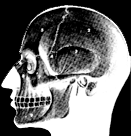Todd Alcott Analyses Inglourious Basterds
For a minute or so, it looks like the protagonist of Inglourious Basterds is going to be Perrier LaPadite, a humble French dairy farmer just trying to eke his way through World War II in the French countryside with his daughters. Into LaPadite's island of relative calm comes Col Hans Landa. The opening scene of Inglourious Basterds is over 15 minutes long, which is extraordinary in and of itself. 15 minutes is a huge amount of screen time to spend on a scene, especially an opening scene, especially a two-handed opening scene where one of the characters will never be seen again. That's just the beginning of the daring and audacity of Quentin Tarantino's screenplay.
The scene is one long suspense beat, a pattern that will be repeated throughout the movie. Over and over, Tarantino slowly ratchets up the tension until is is almost a relief when the tension explodes into violence. Which is, as it turns out, one of the things that elevates Basterds to the level of high art -- Tarantino repeatedly uses the audience's desire for release against it. The movie doesn't merely use violence, it's about violence, particularly violence in movies, or in popular culture anyway, and the way it can be used to manipulate an audience, or a populace. It repeatedly gets you longing for violence and then, by the time it shows up, it's not what you wanted or expected it to be. The movie as a whole doesn't offer up easy answers, rather it asks extremely uncomfortable questions.
Shortly into the first scene, it becomes clear that LaPadite isn't the protagonist, Landa is. LaPadite is reactive, Landa is the one driving the scene every step of the way. The performances in Basterds are extraordinary, and Christoph Waltz as Landa is extraordinary even by the standards of the rest of the movie, but the performance, if I may be so bold, rises from the ingenuity of the screenplay. Link
posted by johannes,
Saturday, March 20, 2010
[The Archives]

.
.
.
.
.
|
.
.
.
|